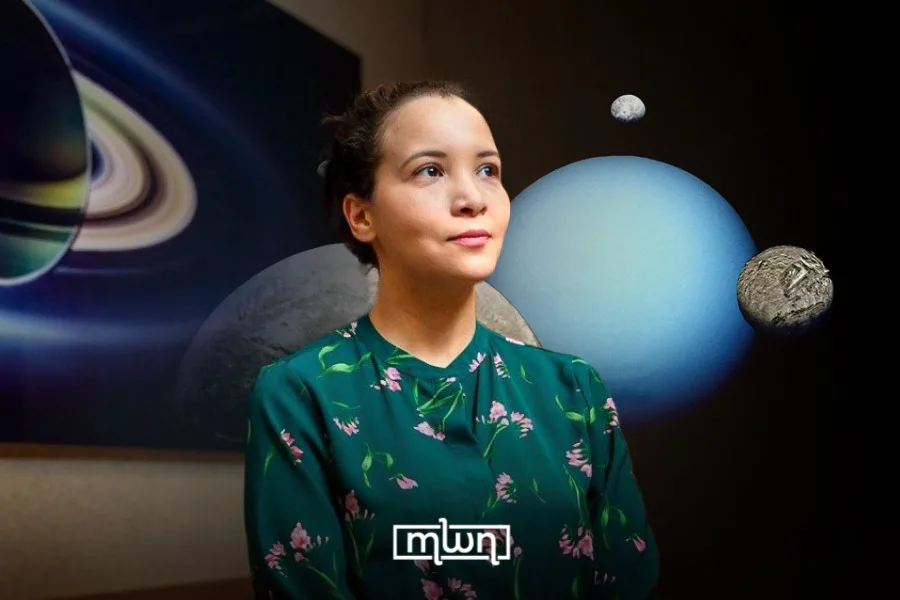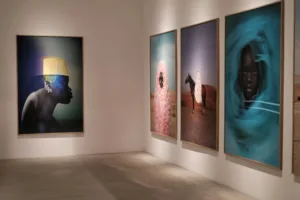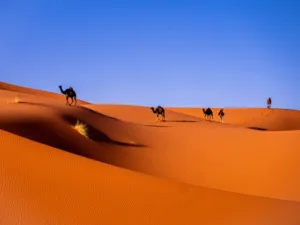Uranus has a new moon, thanks to a Moroccan astrophysicist guiding NASA’s James Webb Telescope to one of its smallest secrets.
Fez– A Moroccan scientist has added a new chapter to the story of our solar system.
Maryame El Moutamid, principal scientist at the Southwest Research Institute (SwRI) in the United States, has led a team of astrophysicists to the discovery of a previously unknown satellite orbiting Uranus, officially recognized as the planet’s twenty-ninth moon.
The finding was made using NASA’s James Webb Space Telescope (JWST), whose near-infrared instruments captured high-precision images on February 2, 2025.
Announced this week by SwRI, the discovery represents a rare advance in our understanding of the distant ice giant and its tightly packed family of moons.
The newly detected moon is small, barely ten kilometers in diameter, but scientifically significant.
It travels around Uranus at a distance of about 56,000 kilometers, nestled between the moons Ophelia and Bianca, and offers clues about the planet’s complex and unstable satellite system.
Maryame explains that Uranus’ moons exert powerful gravitational effects on each other, causing orbital disruptions that eventually lead to collisions.
These collisions create new rings, which later disperse and form new moons, a dynamic cycle repeating roughly every fifty million years.
By identifying this satellite, her team has been able to refine models of how long this instability lasts and what it reveals about the original structure of Uranus’ system.
At 41, El Moutamid stands at the forefront of planetary science, directing a seven-member international team whose work with JWST is producing data of unprecedented quality.
Raised and educated in public schools in Essaouira, she went on to earn her doctorate in France and later joined Cornell University in New York as a postdoctoral researcher before taking on her current role at SwRI.
Her path reflects a mix of talent, perseverance, and global collaboration, which she now urges young Moroccans to embrace.
“To young people who dream of exploring the universe, I say: dare to dream, never underestimate yourselves, and seize every opportunity to work with scientists around the world,” she told MAP.
Uranus itself is an enigmatic planet, often described as “lying on its side” because its axis is tilted by more than ninety degrees relative to its orbit.
This unusual geometry allows its rings and moons to be observed more clearly than those of other planets, but its remote location, the seventh planet from the Sun, has made it difficult to study.
Only one spacecraft, Voyager 2 in 1986, has ever visited Uranus, and its instruments were not sensitive enough to detect moons as small as the one El Moutamid and her colleagues have now identified.
Thanks to JWST’s advanced infrared technology, which captures faint light beyond the visible spectrum, astronomers can finally probe the finer details of Uranus’ system and detect satellites invisible to earlier missions.
Until this discovery, Uranus was known to have twenty-eight moons, including five major ones: Titania, Oberon, Umbriel, Ariel, and Miranda, named after characters from Shakespeare and Alexander Pope.
The new moon, orbiting quietly within the planet’s equatorial plane, joins this unusual ensemble and contributes to a better understanding of how moons and rings interact to maintain, or disrupt, the balance of the system.
Its detection also opens doors to broader questions about the origins of giant planets and their satellites, shedding light on the processes that shaped our solar system billions of years ago.
El Moutamid is not stopping with Uranus. She hopes to contribute to a future robotic mission around Saturn, focusing on its famous rings and smaller moons, some of which may hide subsurface oceans capable of supporting life.
By studying how these celestial bodies evolve and recycle material over time, scientists can uncover fundamental truths about planetary formation and the dynamic forces that govern our cosmic neighborhood.
“This is not just about adding one more moon to the list,” El Moutamid explained. “It is about understanding how moons, rings, and planets interact, and what these interactions tell us about how our solar system was born.”
For Morocco, the achievement is a reminder that scientific excellence knows no borders, and that talent nurtured at home can contribute at the highest levels of international research.
For El Moutamid, it is another step on a journey that began in the classrooms of Essaouira and has now reached the farthest edges of the solar system, a journey that proves determination and curiosity can carry anyone from Earth to the stars.
















